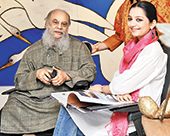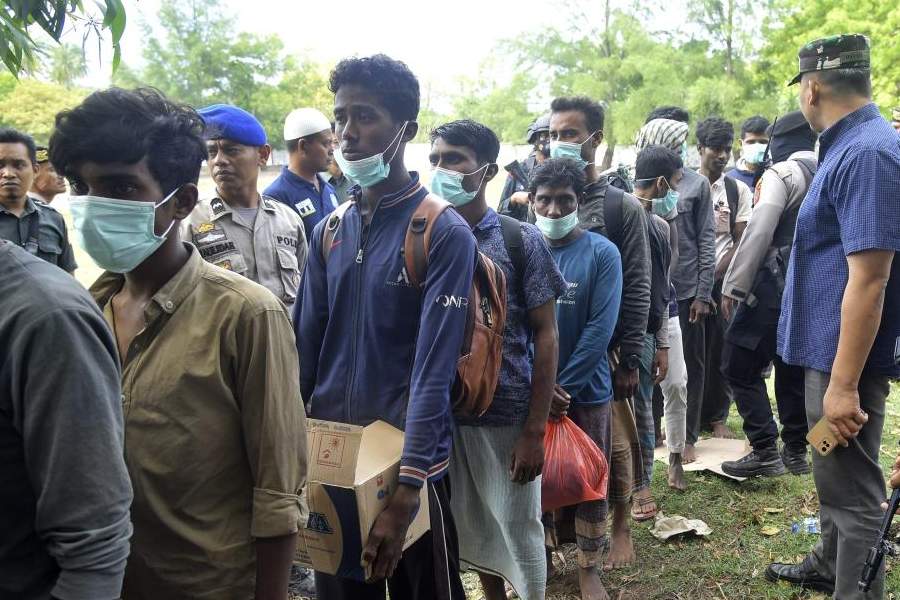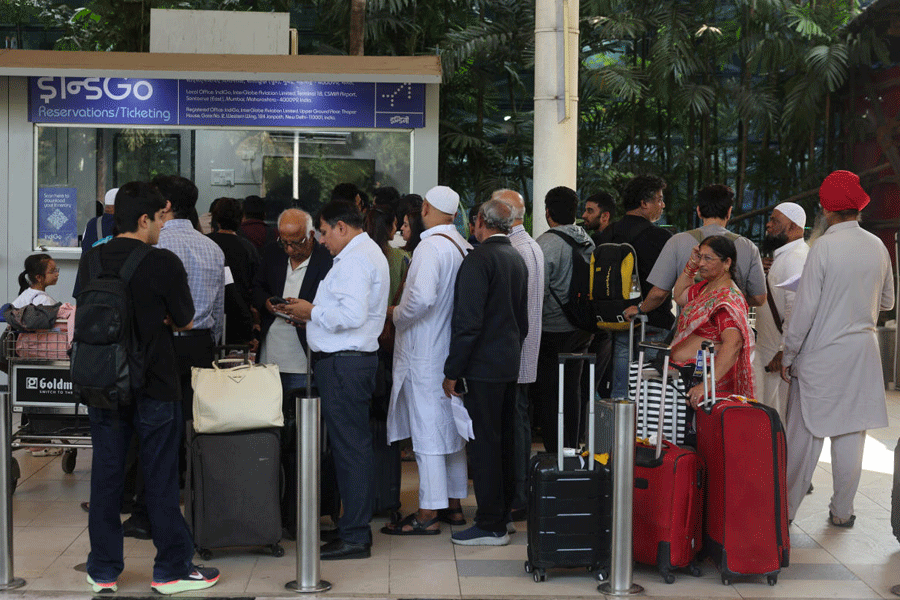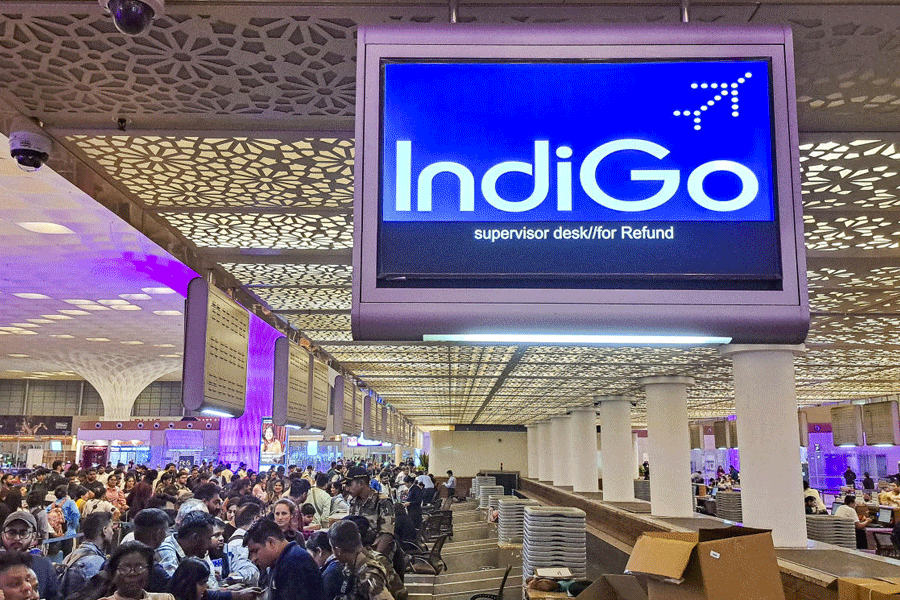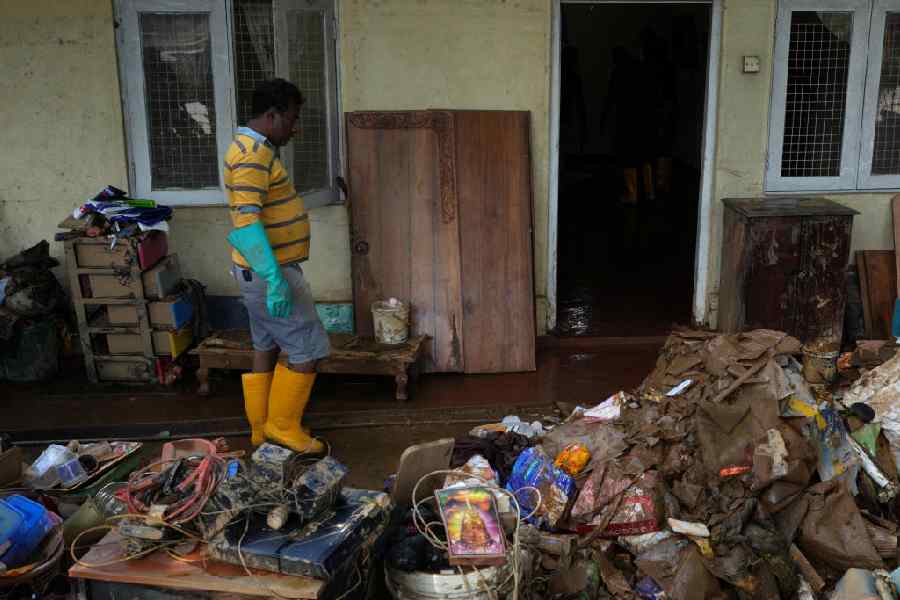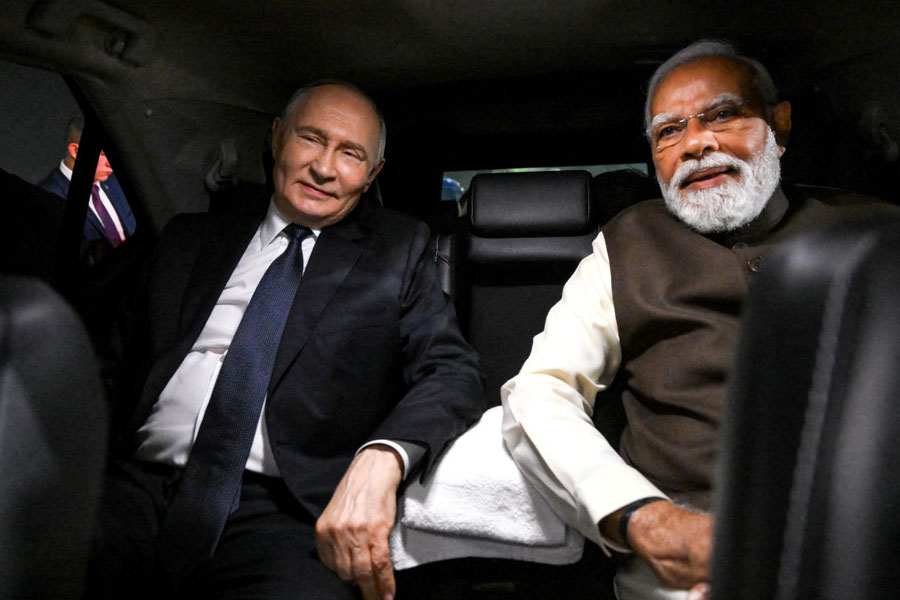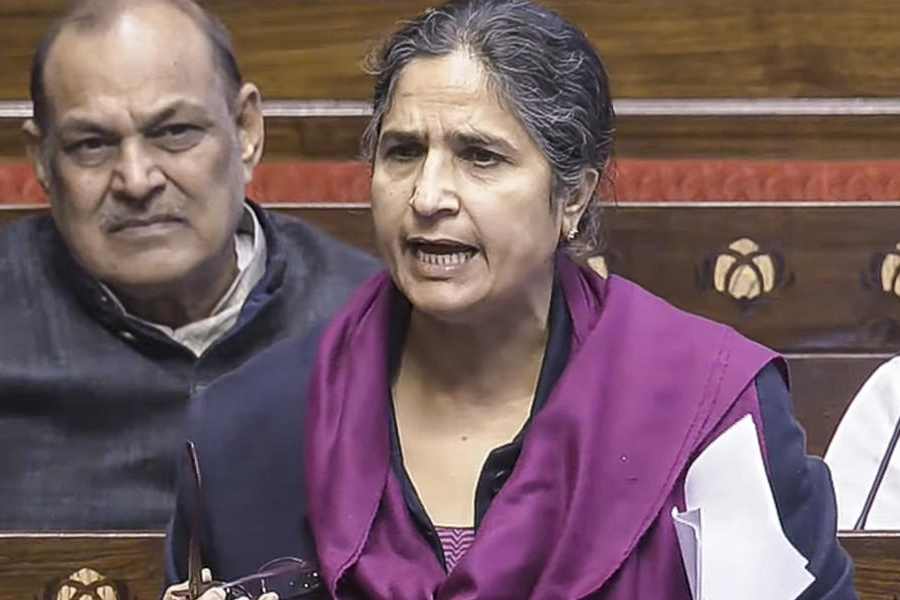 |
June: Were you born in Calcutta, Shuvada?
Shuvaprasanna: Absolutely. I’m a Calcasian (laughs).
J: Are you a Bangal or ghoti?
S: Well, I’m neither Bangal nor bati (Bangal-plus-ghoti) so I must be a ghoti (laughs). I grew up in north Calcutta, in College Row.
J: (Leafing through his biography Black Brown & the Blue) Most people say their life is black and white, but why these three colours for the title of your biography?
S: That’s because these are my favourite colours when painting. Black is all-absorbing; it is the result of mixing all colours. Brown, I have always had a fascination for, and in blue I find peace and solace. Blue represents the sky, the ocean.
J: So what got you started as a painter?
S: My father was a doctor and so we always had patients coming to our house. I would observe them, particularly their faces, and make their portraits....
J: (Spotting a picture of a 12-year-old Shuvaprasanna being kissed on the forehead by Russian leader Voroshilov) Is this baby Shuvaprasanna?! Where was this?
S: This was in 1959 when Voroshilov had come to Calcutta. One day after school I walked up to where the Russian delegates had put up and asked to be let in. The security guard shooed me away but a Russian officer heard me out. I told him I wanted to make a portrait of Voroshilov. When he saw my work he arranged for me to get into Raj Bhavan the next day.
I sat in the audience there and sketched Voroshilov as he sat among dignitaries. Later, when he was shown what I had made, he loved it! He kissed me on my forehead. That picture got published in many newspapers. It was a proud moment for me and I felt encouraged.
J: Wow! I can see pictures of you as a child with Jawaharlal Nehru, Padmaja Naidu…
S: That last one was in fact my first auctioned painting, when I was 16 (smiles). Dr BC Roy had just passed away and they were collecting funds to build a hospital named after him. Others were donating Rs 10-15 but I had no money. I made a portrait of BC Roy and presented it to (then Bengal governor) Padmaja Naidu and the organisers. They auctioned the portrait. It fetched Rs 1,400.
J: So you were already a good painter in your schooldays. What about college?
S: I got into Art College...
J: Was your doctor father all right about having a painter son?
S: My dad threw me out of the house.
J: Oh my god!
S: For two years I lived away from home but it toughened me up. Thereafter Baba and I made up and I returned home. I built a tiny studio at home, above our garage. One day, a German scientist and his wife came to see my paintings. Not only did they buy one, they also wrote to me from Europe that they wanted to organise a show for me there. Things fell into place and I went for my first foreign show.
J: Okay, now please tell me about your love story. How did you meet (wife) Shipradi?
S: Well, I had just returned from my second Europe tour when a friend brought over a young lady, saying she wanted to learn painting from me. She — Shipra — was a quiet and simple girl. And I’ll confess that I was floored by the way she had elegantly draped her sari. I told her I would teach her but also suggested that we be special friends....
J: Shuvada, you proposed at the first meeting! Then what happened?
S: Shipra got up and left. There were a lot of temptations in Europe, I tell you, but all that wasn’t what I had wanted. And now that I had met a wonderful woman, I had upset her! Luckily, after a week, Shipra returned to my studio and accepted my proposal. When we got married sometime later, my father threw me out of the house for the second time (laughs). I was marrying a non-Brahmin.
J: But I’ve seen that Shipradi’s strict with you now.
S: Oh yes, she is my boss now.
J: Coming back to your work, why does the crow feature so prominently in your paintings?
S: Crows are black — my favourite colour. What’s more, they have a shiny black finish on them. Kaalo, Kolkata, kaak — I am drawn to them all. Other birds are dying in metros but crows are survivors.
In the 1990s, I came across the works of English writer Ted Hughes, who has written extensively on crows. I had written to him to come to Calcutta and have a show with his poems and my paintings on crows. I told him he would love Calcutta as it was full of crows and poets. Hughes wrote back, excited about the idea, but did not commit a date for his visit. Later I learnt that he was suffering from cancer. He passed away soon after. Upon his death, the British Council had arranged a programme, where the likes of Aparna Sen would be reading out his poetry. I didn’t know what to say. When the mike was handed to me, I cried out: “Ka-ka!” Calling out like a crow was my ultimate tribute to Hughes.
J: Tell us about your daughter Jonaki. Does she paint? Would you have wanted her to be a painter?
S: Jonaki has been painting since childhood and has a good singing voice, too, but we have never imposed anything on her. She has chosen the field of communication design and is happy with it. She’s getting married on December 11.
J: Tell us about your political association with Didi (Mamata Banerjee)?
S: I am not interested in politics but I have stood up for change. I could not sit quiet watching farmer killings and the atrocities by a party against people. I will speak out, loudly, and through my paintings.
J: Well, we shall look forward to seeing more of your paintings. Thank you Shuvada, it was wonderful getting to know more about you.

